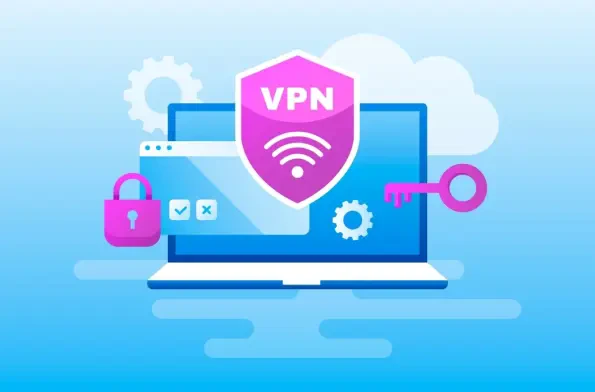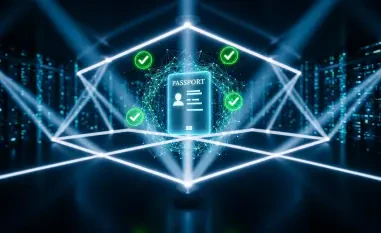Imagine a world where every online move is tracked, every personal detail is at risk of exposure, and cyber threats lurk around every digital corner, prompting millions of users to turn to Virtual Private Networks (VPNs) as a shield, believing they offer impenetrable security. Yet, a growing chorus of cybersecurity experts questions this assumption, revealing that VPNs may not be the silver bullet many hope for. This industry report dives deep into the reality of VPN protection, exploring their strengths, exposing critical flaws, and examining their evolving role in a rapidly changing digital environment. With privacy concerns at an all-time high, understanding the true capabilities of VPNs has never been more urgent.
Understanding VPNs: A Snapshot of Their Role in Cybersecurity
Virtual Private Networks have become a cornerstone of online security, creating encrypted tunnels between users and the internet to safeguard data from prying eyes. Their primary purpose is to protect sensitive information by masking IP addresses and securing connections, especially on public networks. As digital interactions dominate daily life, VPNs have gained prominence as tools for preserving privacy amid rising concerns over data breaches and surveillance.
The VPN industry today is a dynamic space, marked by fierce competition among major players like NordVPN, ExpressVPN, and Surfshark, alongside numerous smaller providers. Technological advancements in encryption protocols, such as WireGuard, have enhanced performance and security, while the market has seen a surge in demand driven by heightened awareness of online privacy. Annual growth projections indicate a robust expansion of the sector, with estimates suggesting a compound annual growth rate of over 15% from this year to 2027, reflecting a global push for digital protection.
Beyond individual users, VPNs are widely adopted by organizations to secure remote workforces and protect proprietary data. Their perceived role as a comprehensive security solution has fueled widespread reliance, from casual internet users bypassing geo-restrictions to enterprises safeguarding critical infrastructure. However, this perception often overshadows nuanced limitations, setting the stage for a deeper examination of their effectiveness in addressing modern cyber threats.
The Reality of VPN Protection: Benefits and Limitations
Key Advantages Driving VPN Adoption
VPNs offer a range of compelling benefits that have cemented their popularity among consumers and businesses alike. Connection encryption stands out as a primary advantage, ensuring that data transmitted over unsecured networks remains unreadable to potential interceptors. This feature is particularly vital for users accessing public Wi-Fi in cafes or airports, where vulnerabilities are rampant.
Another significant draw is IP address masking, which provides a layer of anonymity by hiding a user’s true location. This capability not only enhances privacy but also enables access to geo-restricted content, such as streaming services unavailable in certain regions. For many, this dual functionality addresses both security concerns and practical needs in an increasingly connected world.
These advantages resonate strongly in an era of escalating cyber threats, where data breaches and identity theft are commonplace. VPNs fulfill a critical demand for tools that mitigate risks associated with online activity, offering peace of mind to users navigating a landscape fraught with digital dangers. Their ability to deliver tangible solutions has driven adoption rates to unprecedented levels.
Critical Shortcomings Exposed by Experts
Despite their benefits, VPNs are far from flawless, as cybersecurity experts frequently point out. Many consumer-grade products suffer from weak encryption standards, leaving users exposed to sophisticated attacks. A lack of independent audits in numerous services further compounds the issue, with no assurance that promised security measures are actually in place.
Real-world incidents highlight these vulnerabilities, such as a widely reported case involving a Chrome VPN extension that turned out to be spyware, compromising thousands of users’ data. Such events underscore the dangers of over-reliance on VPNs, revealing that not all providers prioritize user safety over profit. This discrepancy between marketing claims and actual protection is a growing concern.
Experts also note that VPNs fail to secure data at the content level, meaning that while the connection may be encrypted, the information itself remains vulnerable once it reaches its destination. This limitation challenges the notion of VPNs as a complete security solution, urging users to look beyond surface-level safeguards for comprehensive protection against evolving threats.
Challenges in Relying on VPNs for Complete Security
The reliance on VPNs as a standalone security measure faces significant technical and practical hurdles. Personal VPNs, often chosen for convenience or cost, can harbor vulnerabilities like outdated protocols or unpatched software, making them easy targets for cybercriminals. These weaknesses are particularly alarming when users assume their data is fully protected.
In corporate settings, personal VPN usage during remote work introduces additional risks, such as the phenomenon of “impossible travel,” where user locations appear inconsistent due to masked IP addresses. This lack of visibility hampers IT teams’ ability to monitor threats, potentially allowing unauthorized access to sensitive systems. The absence of oversight in such scenarios can undermine enterprise security frameworks.
Addressing these challenges requires a shift toward multi-layered strategies that complement VPN usage. Endpoint monitoring can provide critical insights into device activity, while adopting broader security approaches, such as zero-trust architectures, ensures that trust is never assumed. Combining these measures with VPNs offers a more robust defense, acknowledging that no single tool can counter the sophisticated nature of modern cyber risks.
Governance and Compliance: Navigating the VPN Landscape
The regulatory environment surrounding VPNs is complex, shaped by data privacy laws like the General Data Protection Regulation in Europe and various national mandates on data residency. Geo-fencing requirements often complicate VPN usage, as certain regions restrict access to services that bypass local content controls. Navigating this landscape demands careful attention to legal obligations.
Governance frameworks play a pivotal role in balancing user privacy with organizational security needs. Companies are increasingly enforcing acceptable use policies that mandate the use of approved VPNs, ensuring control over encryption keys and traffic monitoring. Such policies help maintain compliance while minimizing risks associated with unmanaged personal VPNs in professional settings.
Experts recommend integrating tools like Data Loss Prevention systems and multi-factor authentication to enhance visibility and control, even when data flows through encrypted tunnels. These measures support audit trails and protect against data breaches, aligning with regulatory demands. Striking a balance between privacy rights and security imperatives remains a critical focus for organizations aiming to leverage VPNs responsibly.
The Future of VPNs: Evolving Beyond Traditional Security
Emerging trends in cybersecurity suggest that VPNs must adapt to maintain relevance amid shifting paradigms. Innovations like content-level protection, remote rendering, and isolated execution environments are gaining traction as alternatives that secure data directly, rather than relying solely on connection encryption. These advancements signal a departure from traditional perimeter-based defenses.
Potential disruptors, such as breakthroughs in endpoint security and changing consumer expectations for seamless privacy, could redefine VPN functionality. As users demand more transparent and effective solutions, providers may need to integrate additional layers of protection or risk losing market share. This evolving landscape challenges the industry to innovate continuously.
Looking ahead, global cyber threat trends, coupled with tightening regulations, will likely shape VPN development. Increased scrutiny on data handling practices may push providers to adopt stricter standards, while collaborative efforts between technology firms and policymakers could foster safer digital ecosystems. The trajectory of VPNs hinges on their ability to evolve alongside these dynamic influences, ensuring they remain a viable component of broader security strategies.
Conclusion: Rethinking VPNs in a Multi-Layered Security Strategy
Reflecting on the insights gathered, it becomes evident that VPNs serve as a valuable yet incomplete tool in the cybersecurity arsenal. Experts consistently highlight that while VPNs provide essential benefits like connection encryption, their limitations in addressing content-level security and personal usage risks demand attention. This analysis underscores a pivotal shift in perspective, recognizing that reliance on a single solution falls short against the backdrop of sophisticated cyber threats.
Moving forward, actionable steps emerge as a priority for both individuals and organizations. For users, selecting VPNs with verified audits and robust encryption, alongside adopting supplementary practices like secure browsing, proves crucial. Enterprises, on the other hand, benefit from enforcing strict policies, prioritizing company-approved solutions, and investing in endpoint visibility tools to safeguard sensitive data.
Ultimately, the discourse points toward a future where cybersecurity embraces a dynamic, multi-layered approach. Integrating VPNs with innovative technologies and governance frameworks offers a pathway to resilience. As threats continue to evolve, the industry is encouraged to anticipate challenges with adaptability, ensuring that protection strategies remain ahead of risks in an ever-changing digital realm.













